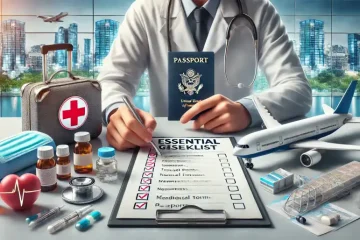Post Preview
Key Takeaways
- Learn about the Lifeline Program and how it provides essential support for affordable communication.
- Discover how to qualify and apply for the program.
- Understand the broader impact of this initiative on society.
Introduction to the Lifeline Program
The Lifeline Program bridges the accessibility gap in today’s hyper-connected world. As our reliance on digital communication grows, staying connected becomes integral to everyday life—whether you’re handling a family emergency, participating in remote work, or pursuing educational opportunities. For individuals facing financial constraints, the Lifeline Program offers a much-needed resource for telecommunication services. This initiative, authorized by the federal government, ensures that everyone, regardless of income, can maintain a minimum level of connectedness with the world around them.
Understanding the Lifeline qualifications is the first step towards unlocking this support system. By being aware of who is eligible and the procedures involved, people can easily incorporate the advantages of inexpensive communication into their lives, which will ultimately lessen isolation and enhance quality of life.
Benefits of the Lifeline Program
The primary advantage of the Lifeline Program is financial relief provided to eligible participants, which translates into reduced costs for phone and internet services. For many, access to economic services means freeing up hard-earned income to cover essential needs like food, housing, and healthcare. Beyond direct savings, the program opens doors to critical services—health consultations over the phone, reaching out to potential employers, or accessing educational resources online. Additionally, by keeping communication open, the program plays a vital role in safeguarding against emergencies, allowing individuals to maintain contact with emergency services when most needed. This enhanced connectivity can also foster a sense of community, as individuals can stay in touch with family and friends, reducing feelings of isolation. Moreover, the program supports personal growth and development by enabling users to access online courses and job training resources that can lead to better employment opportunities. Ultimately, the Lifeline Program alleviates financial strain and empowers individuals to improve their quality of life and navigate challenges more effectively.
Eligibility Criteria
The Lifeline Program is meticulously designed to cater to those most in need. The Federal Public Housing Assistance Program, Medicaid, Supplemental Nutrition Assistance Program (SNAP), and other federal assistance programs are among those for which eligibility is established based on income level or participation. Potential applicants must furnish documentation that validates their eligibility to ensure that the subsidies benefit those who genuinely require them. This targeted approach not only safeguards the program’s integrity but also provides the efficient allocation of resources, benefiting communities on a larger scale.
Application Process Simplified
Applying for the Lifeline Program is relatively straightforward, but understanding and adhering to each step can expedite proceedings significantly. For those prepared to use, start by confirming your eligibility based on the criteria set forth and collect the necessary documentation, including proof of income or enrollment in qualifying assistance programs. Next, navigate to the program’s official online platform or contact a participating telecommunications service provider who can facilitate the application process. Completing the application accurately and compiling all required documents can lead to timely approval, ensuring minimal disconnection from necessary services during the transition.
Broader Impact on Society
Beyond individual benefits, the Lifeline Program catalyzes transforming entire low-income communities. By providing tools for connectivity, it fosters greater social inclusion and empowers communities to participate more fully in the digital economy. Accessible communication improves mobility within the job market and educational attainment, which is critical in reducing the digital divide. These efforts align with broader initiatives like those led by the National Digital Inclusion Alliance, which champions digital equity and inclusion across various platforms and demographics, striving to ensure that equitable access to technology becomes a reality for all.
Challenges and Future Prospects
While the Lifeline Program has achieved significant successes, it faces various challenges. Primarily, increasing awareness about the program remains a hurdle. Many eligible participants may not apply simply due to a lack of information. Additionally, the process can become cumbersome without proper guidance. Ideally, further simplifications and improvements in outreach and accessibility are needed to optimize its effectiveness. Looking to the future, advancements in technology and policy development present vast potential for enhancing the program’s reach and efficiency, ensuring sustained positive impacts on participants’ lives.
Connected Matters
In the modern world, where digital connectivity is becoming increasingly intertwined with basic human necessities, the Lifeline Program offers a fundamental service. It’s more than a subsidy; it’s a bridge to maintaining crucial life connections, enhancing social inclusion, and delivering economic mobility. As we adapt to an ever-evolving technological landscape, spreading awareness about such initiatives is paramount. By encouraging those in need to explore and utilize resources like the Lifeline Program, we can collectively contribute to a more equitable, connected society.
Conclusion
To summarize, low-income families depend on the Lifeline Program to guarantee access to essential communication services. Reducing financial burdens and promoting connectivity empower individuals to pursue educational opportunities, seek employment, and access healthcare services. The program addresses immediate needs and fosters long-term societal benefits by promoting social inclusion and economic mobility. However, increasing awareness and simplifying the application process remain critical challenges that must be addressed to maximize the program’s impact. As we progress, ongoing technological advancements and supportive policies will be essential in enhancing the Lifeline Program’s reach and effectiveness. Ultimately, ensuring that everyone can stay connected is not just a goal but a necessary step toward building a more equitable and inclusive society for all.



